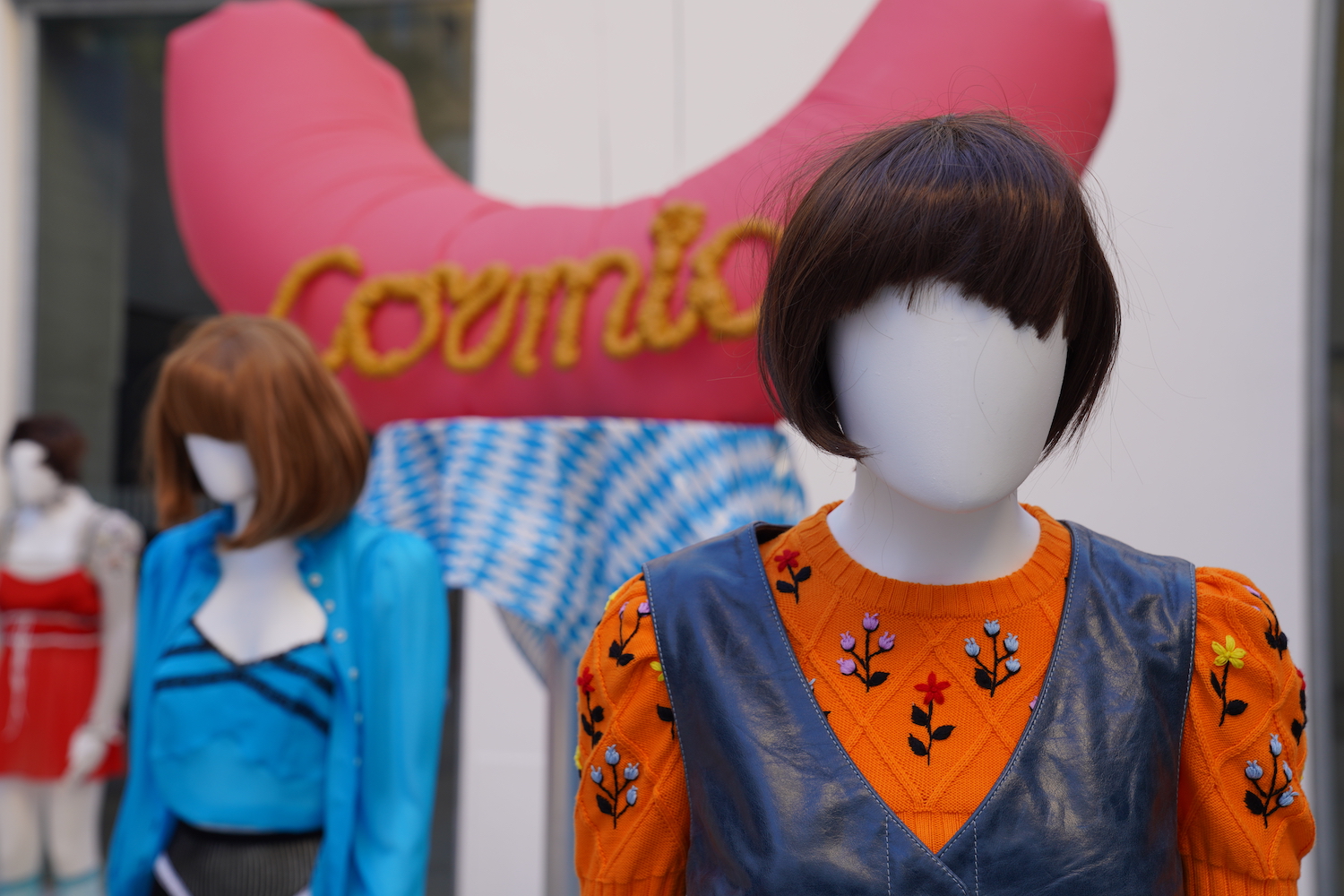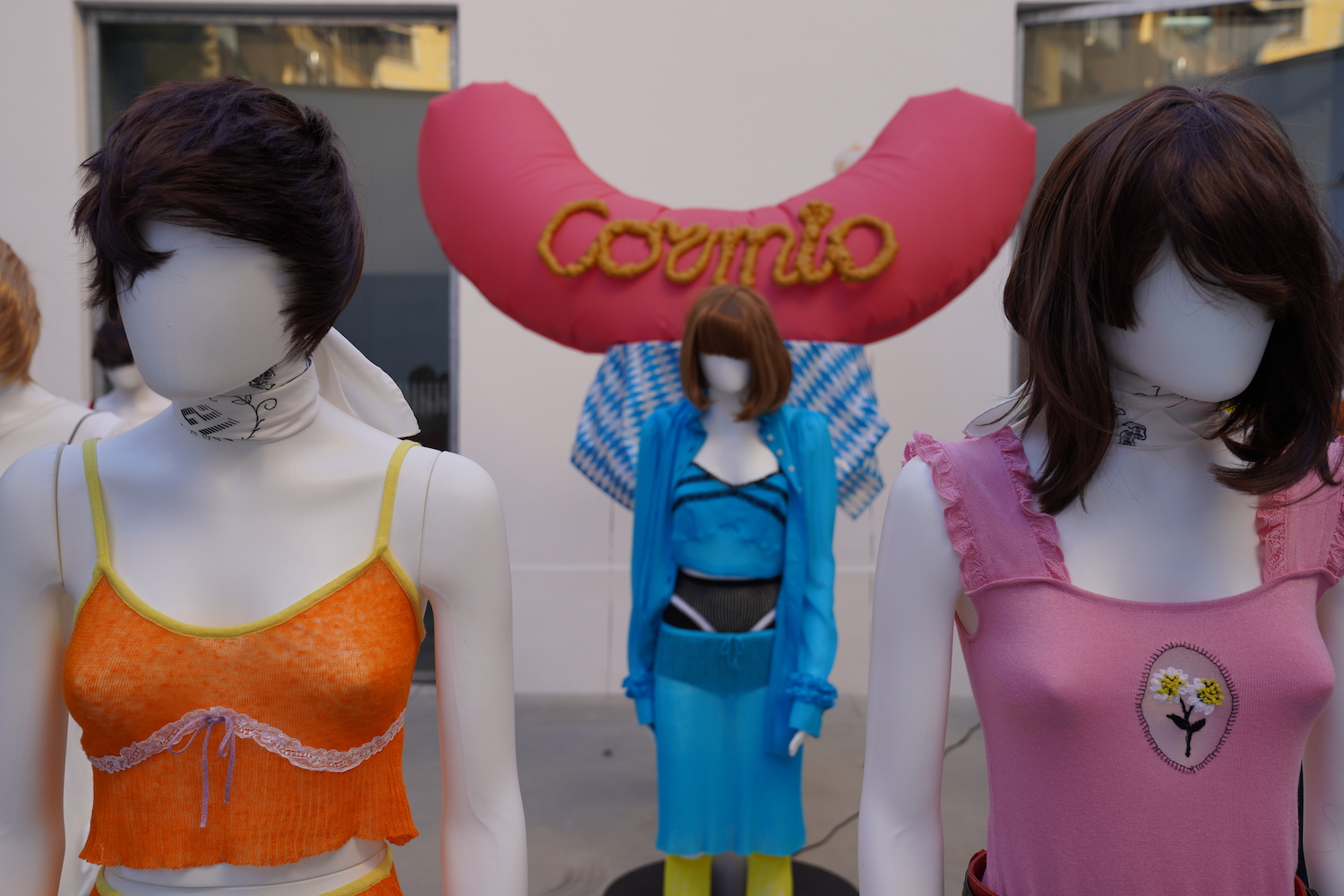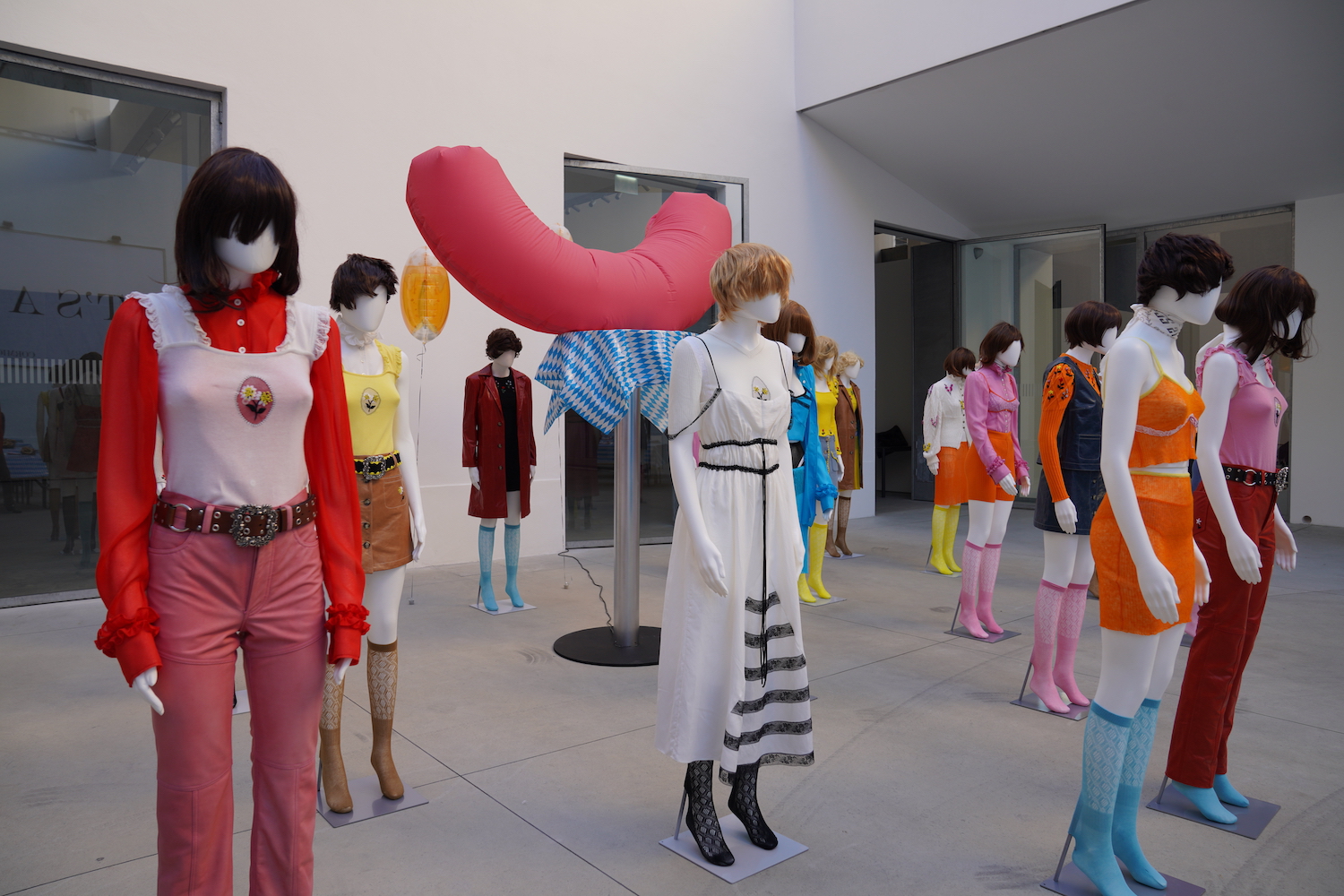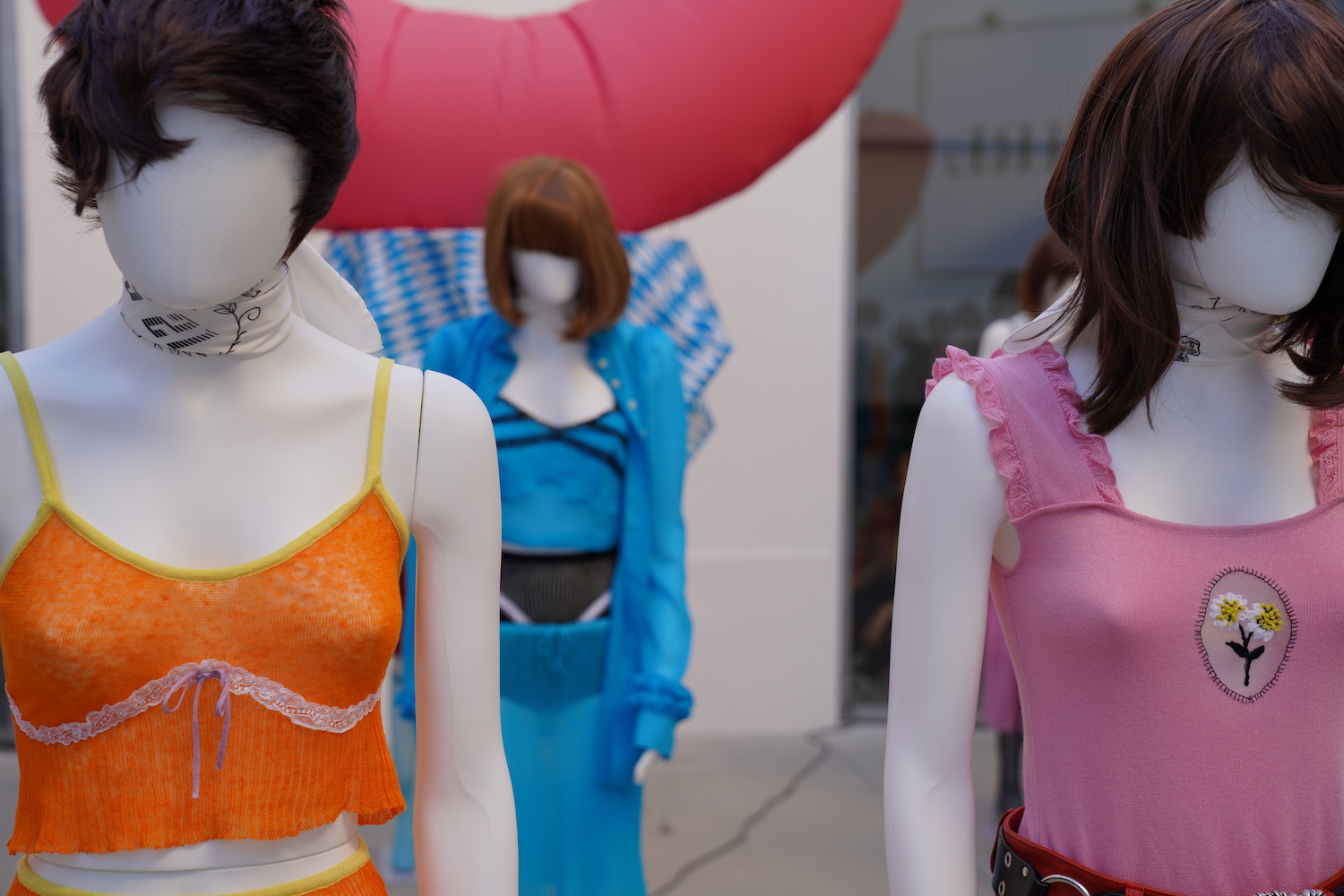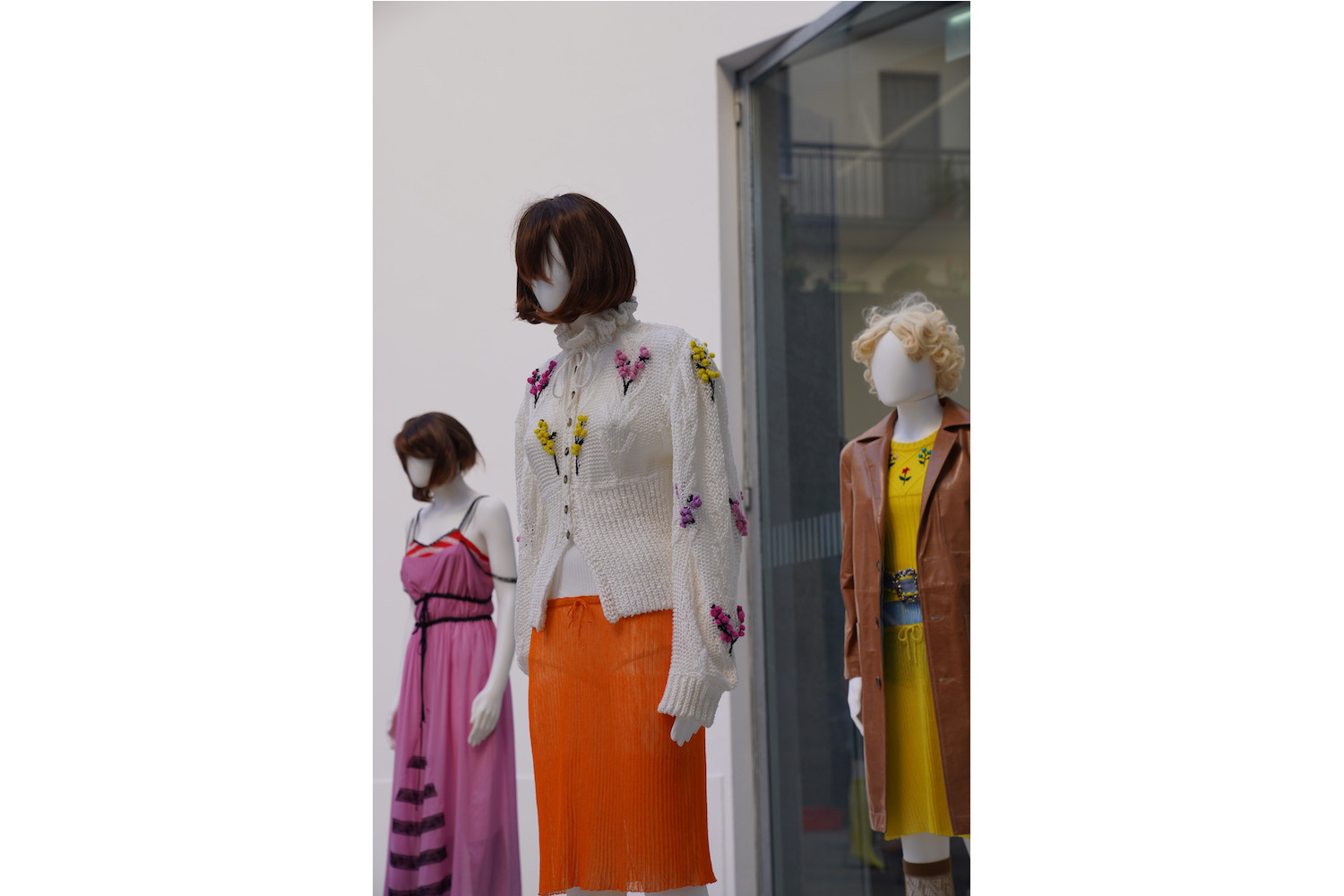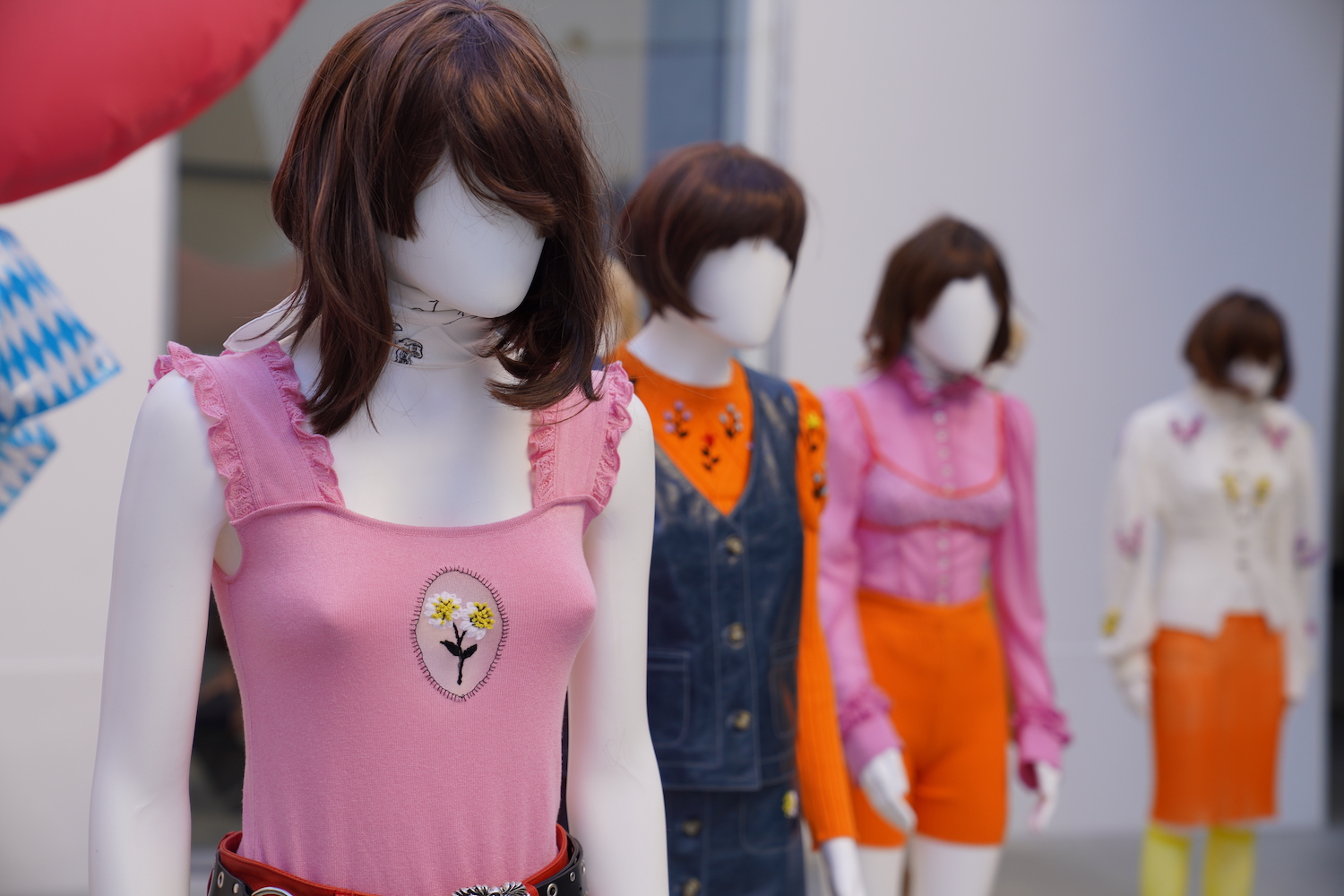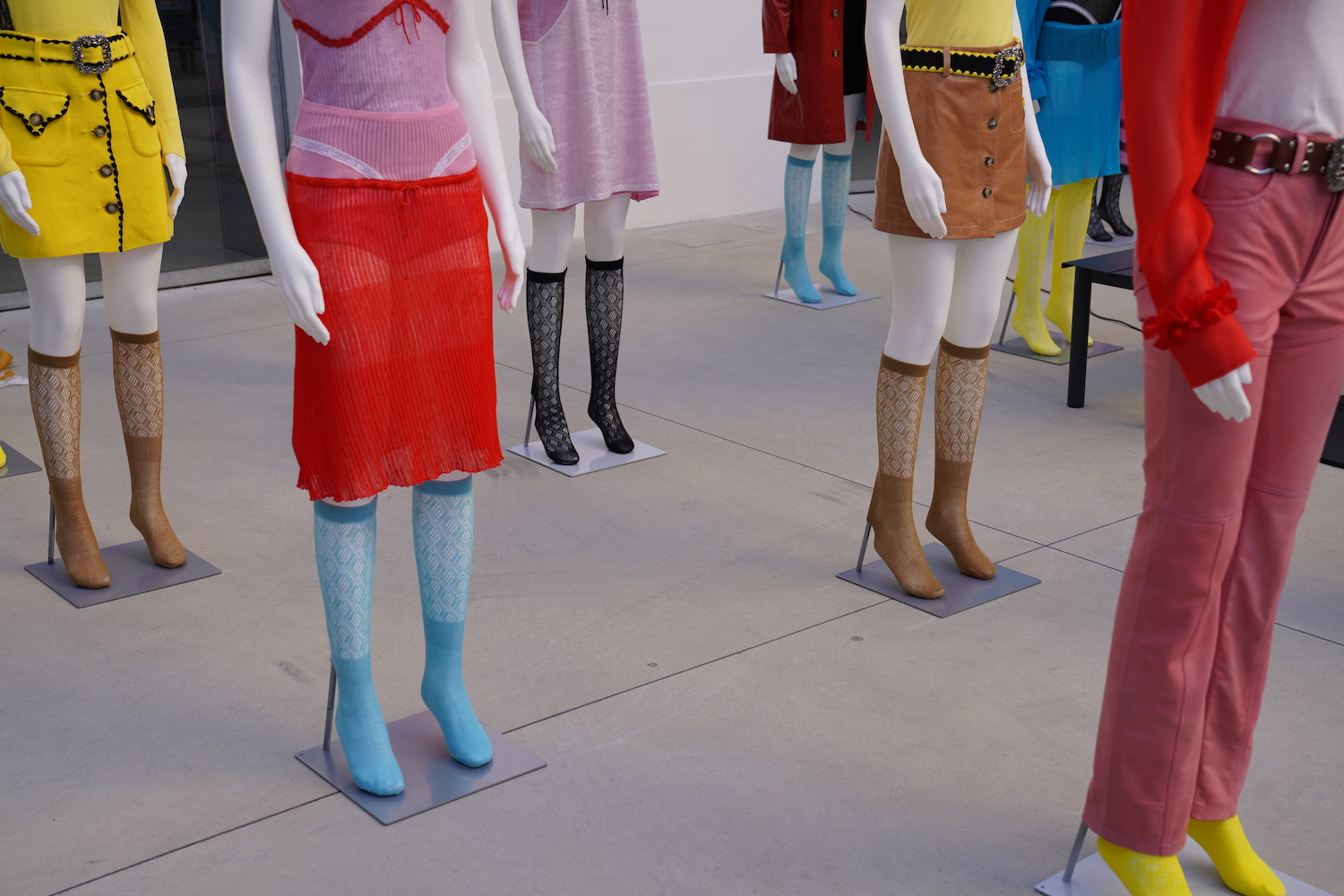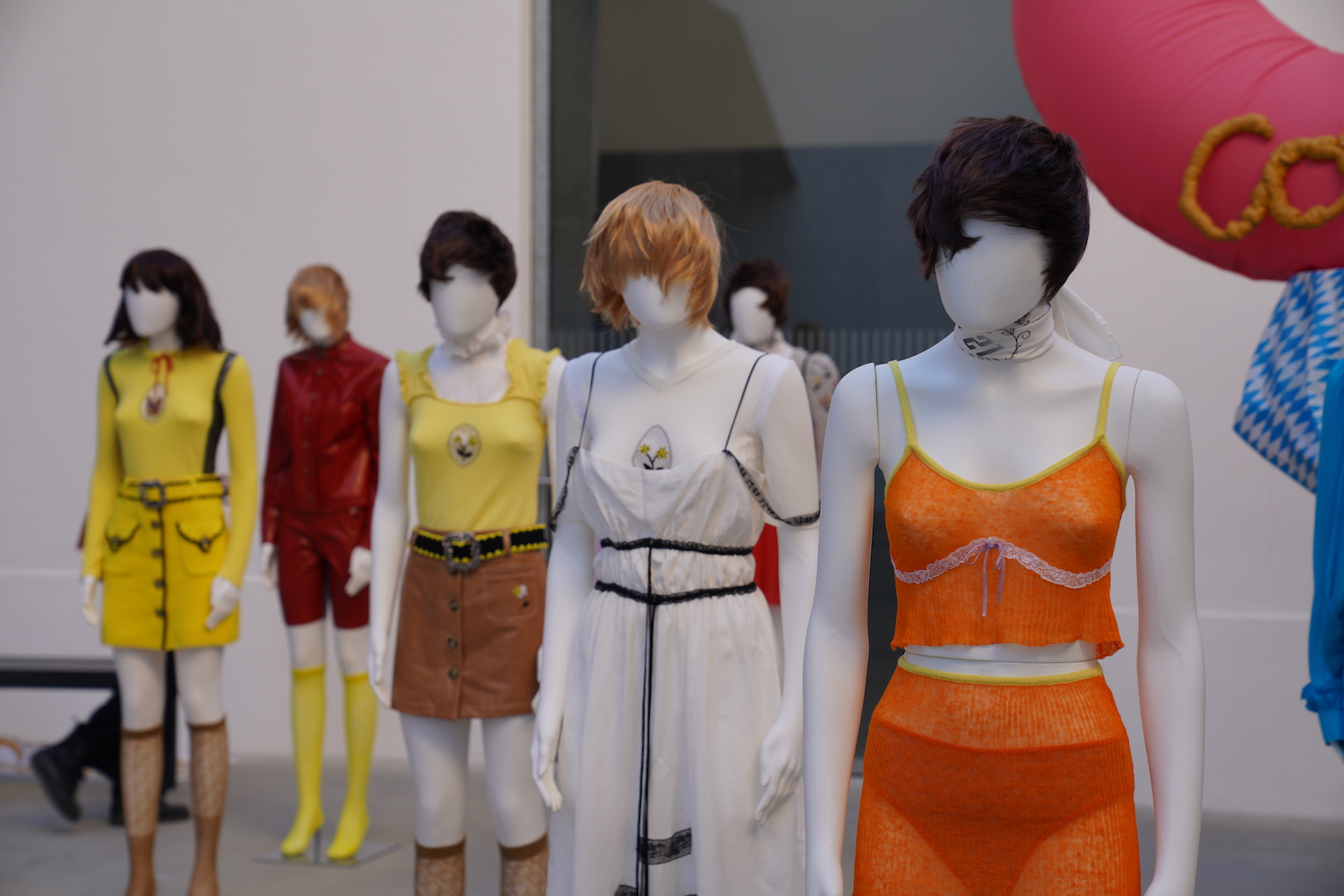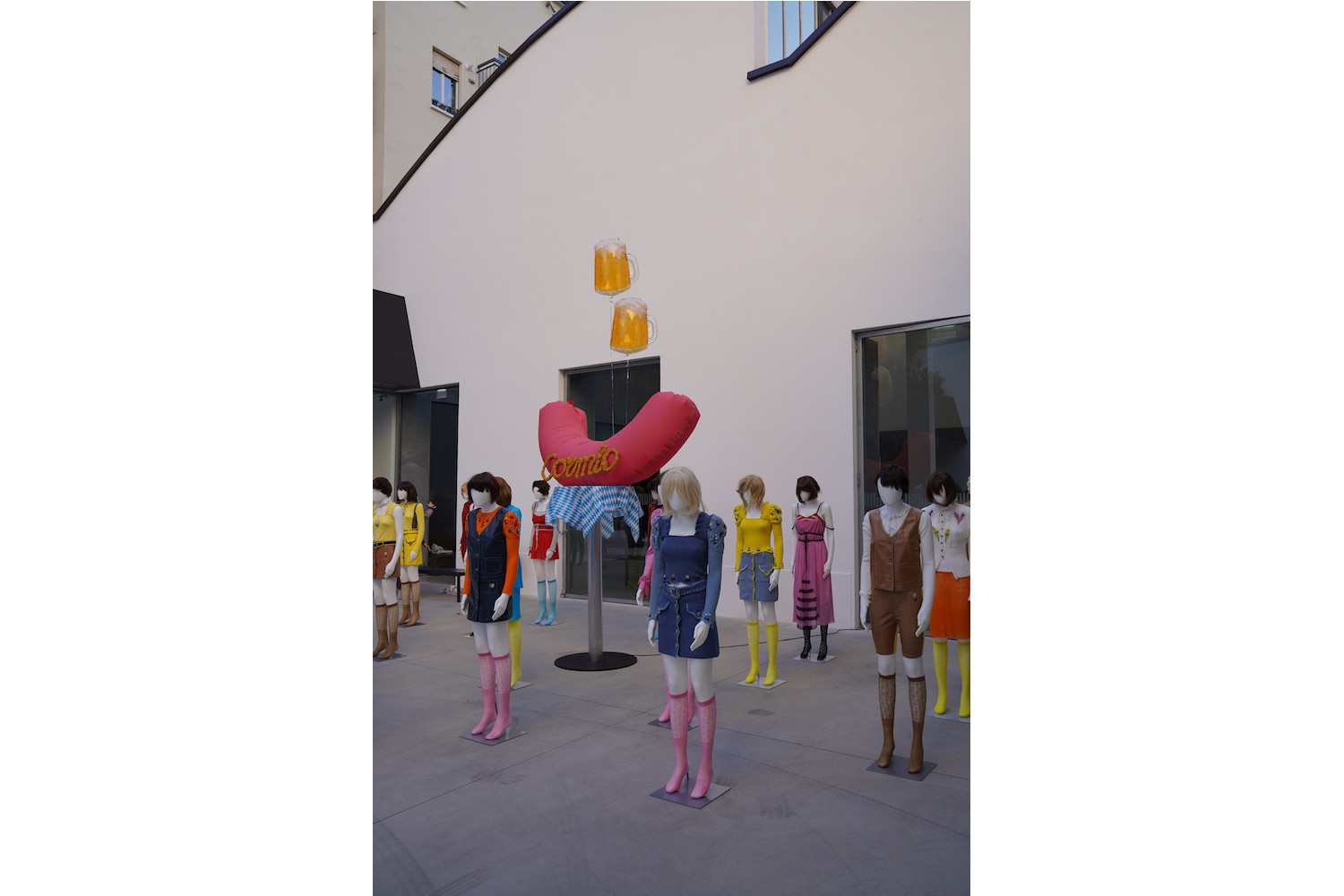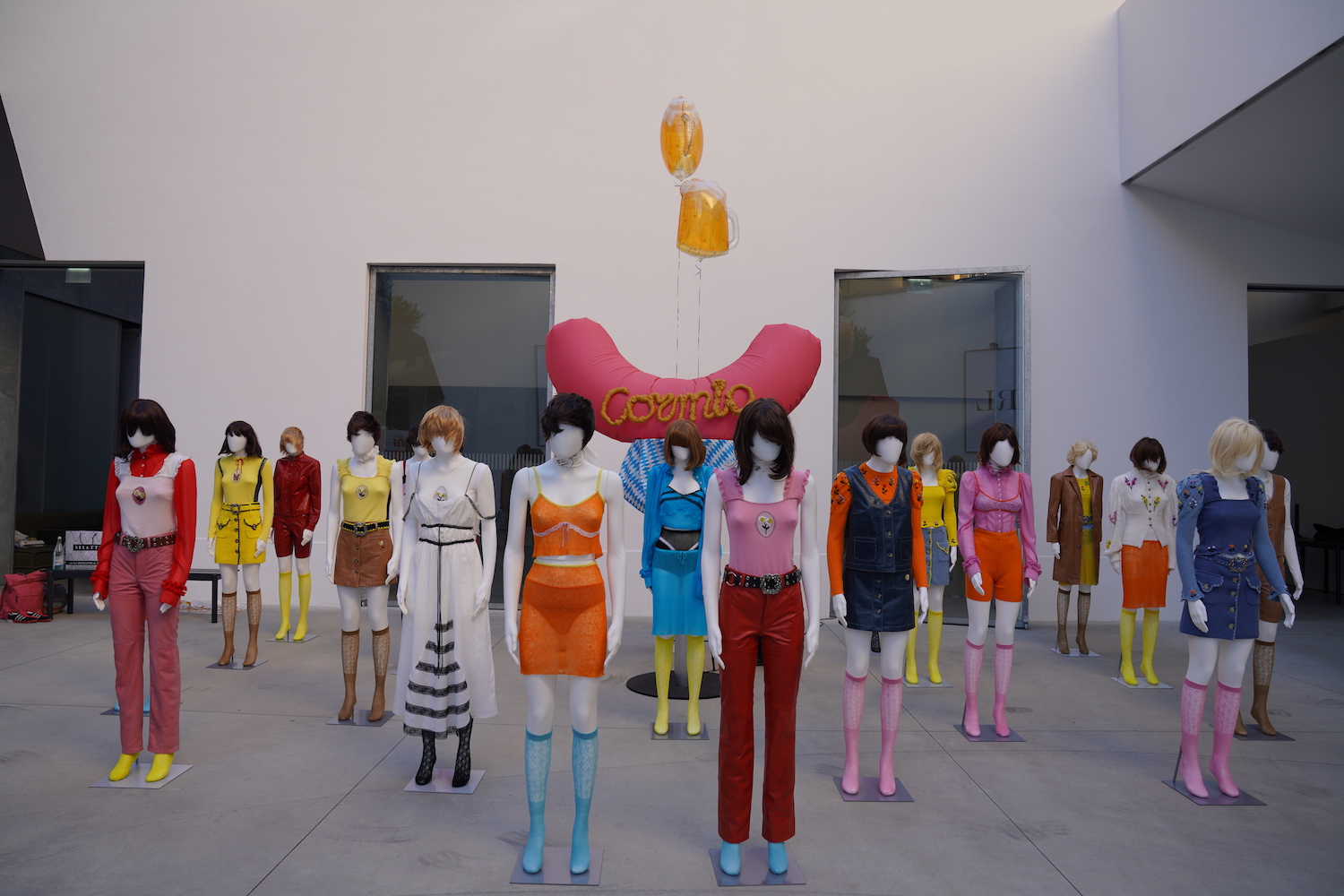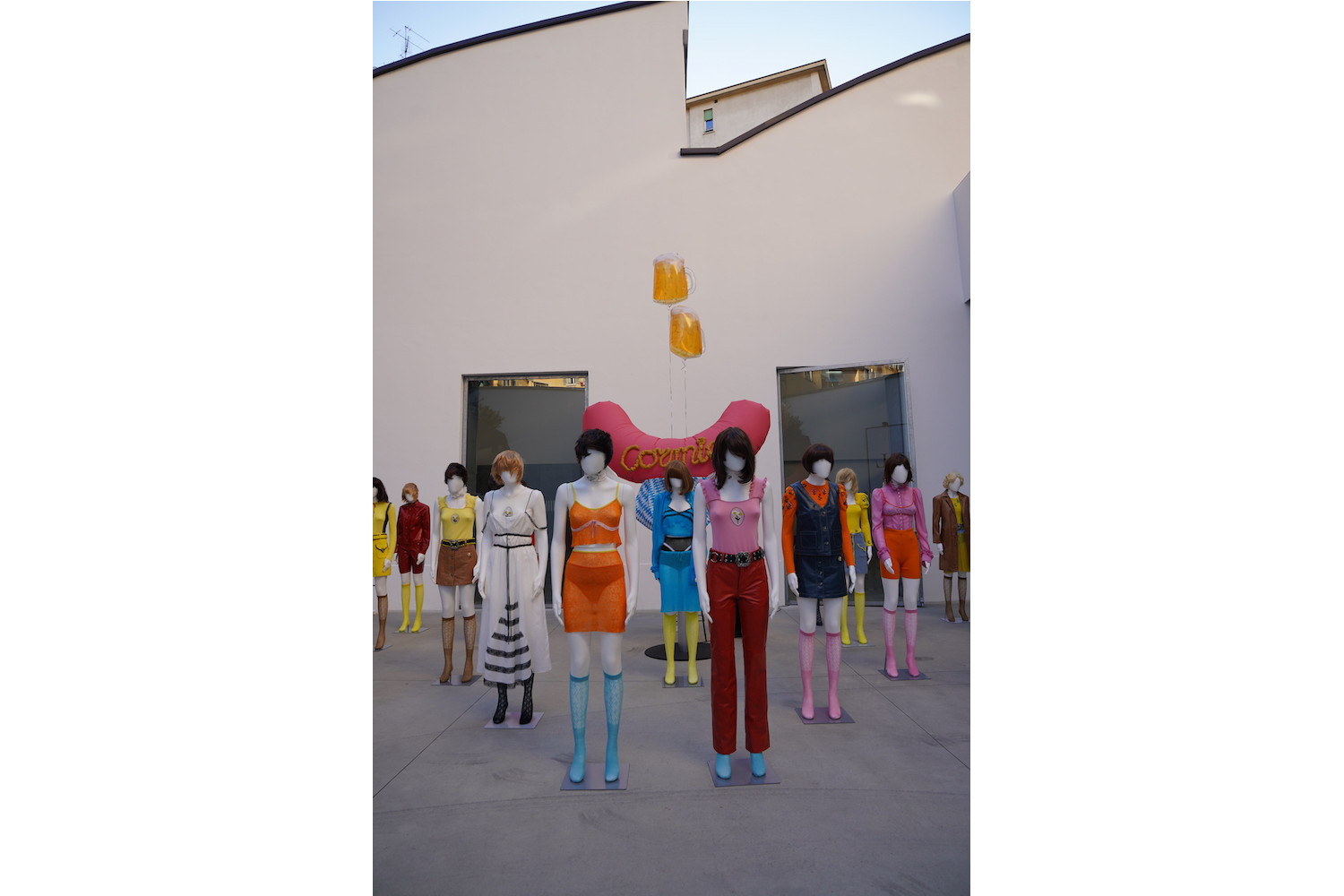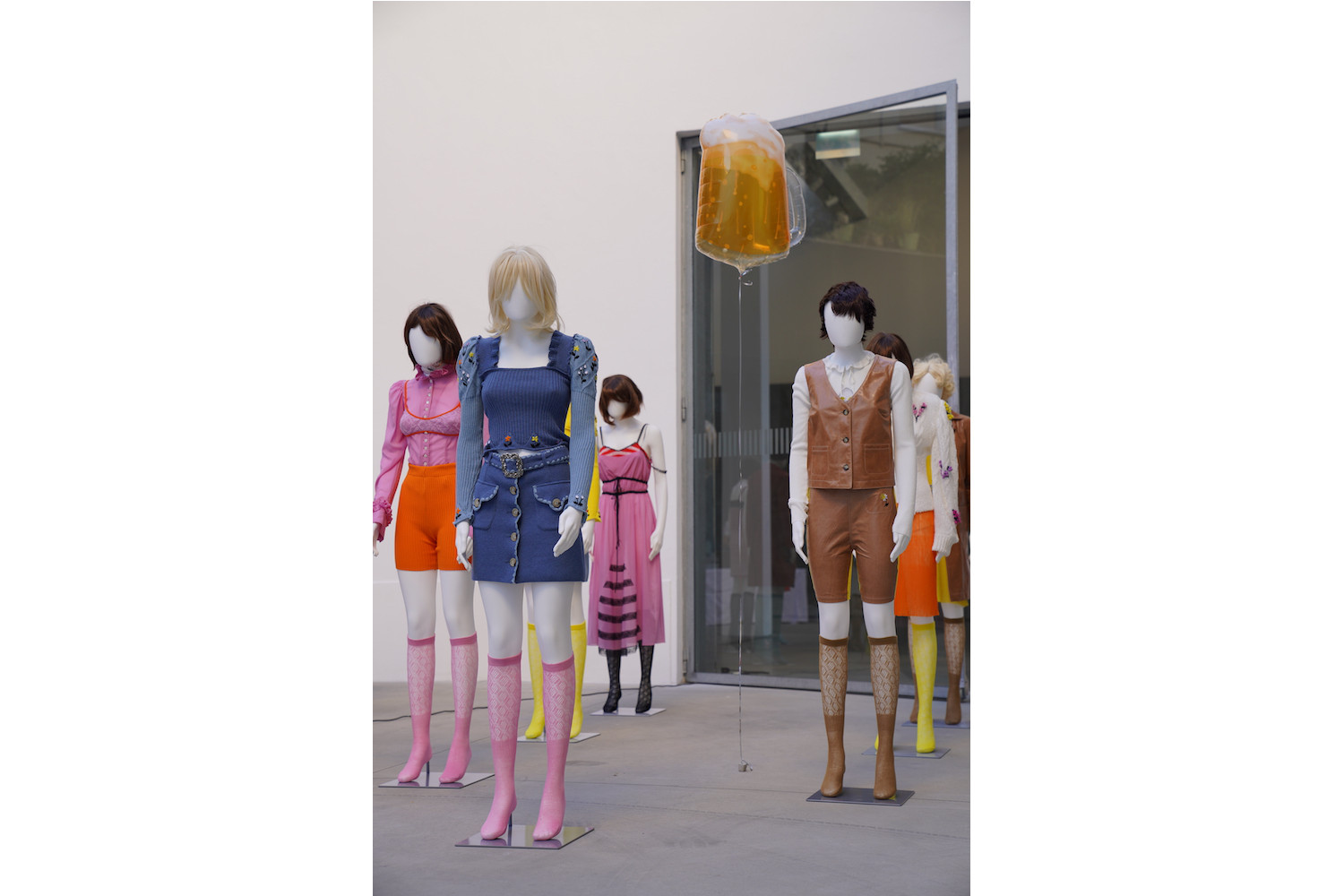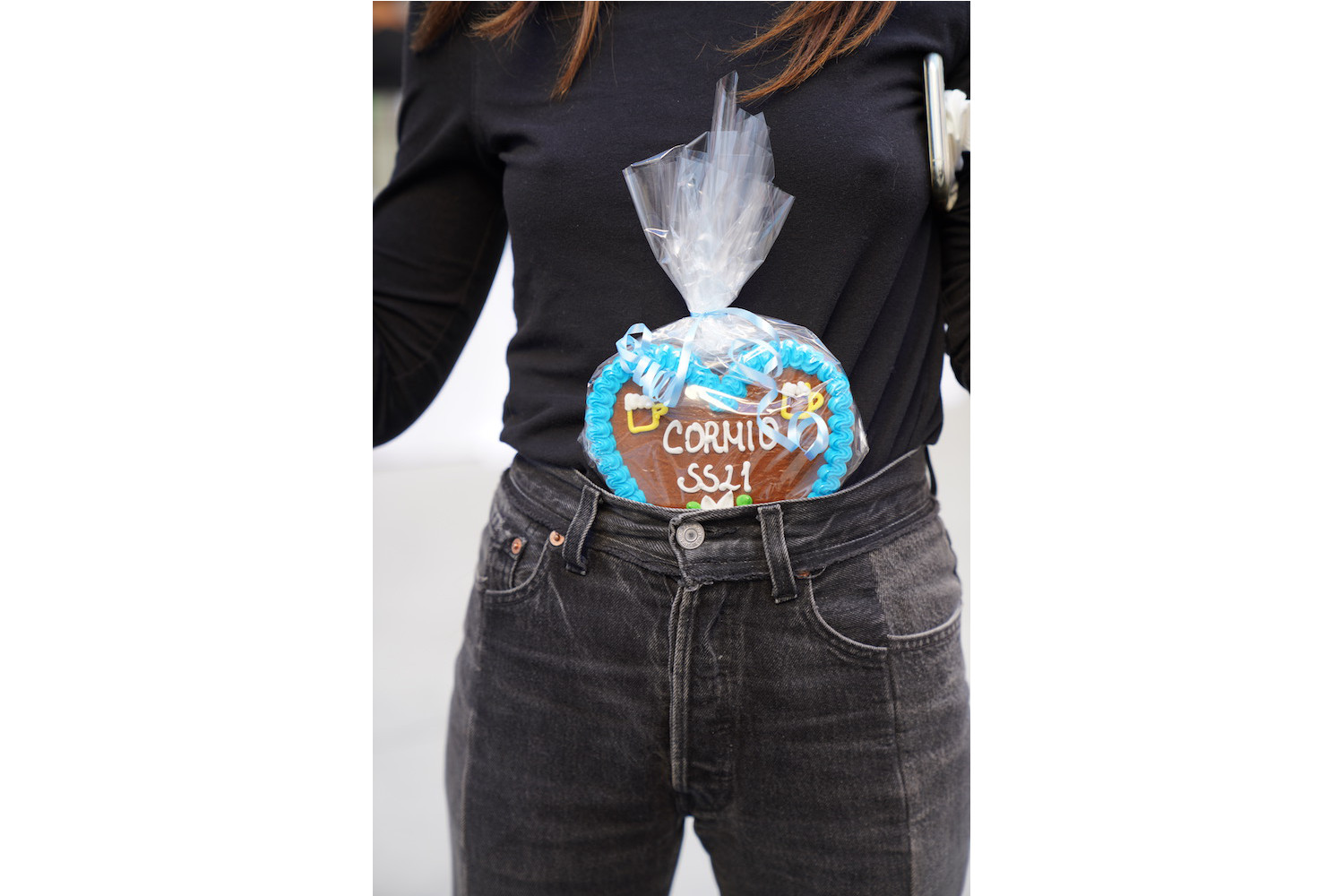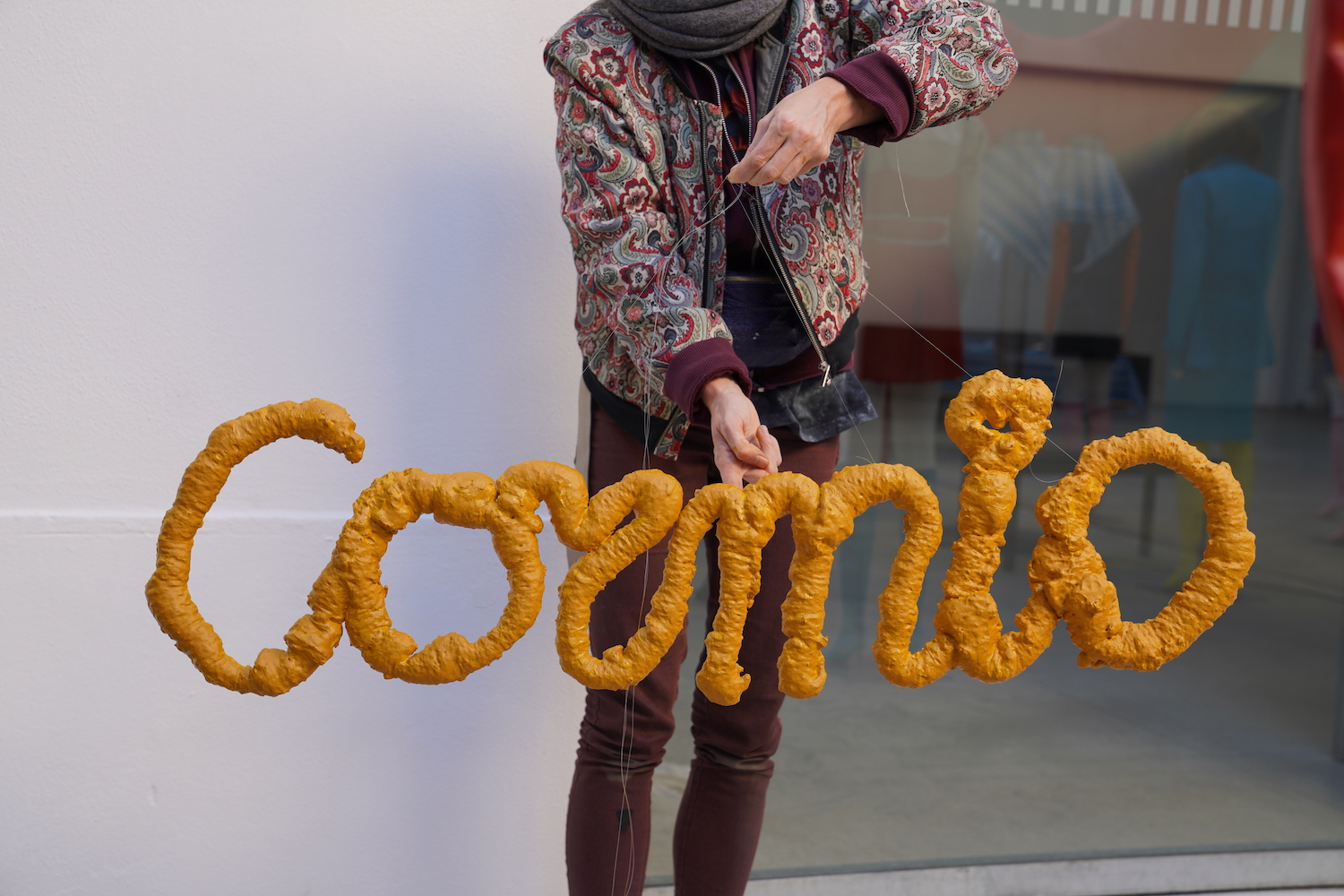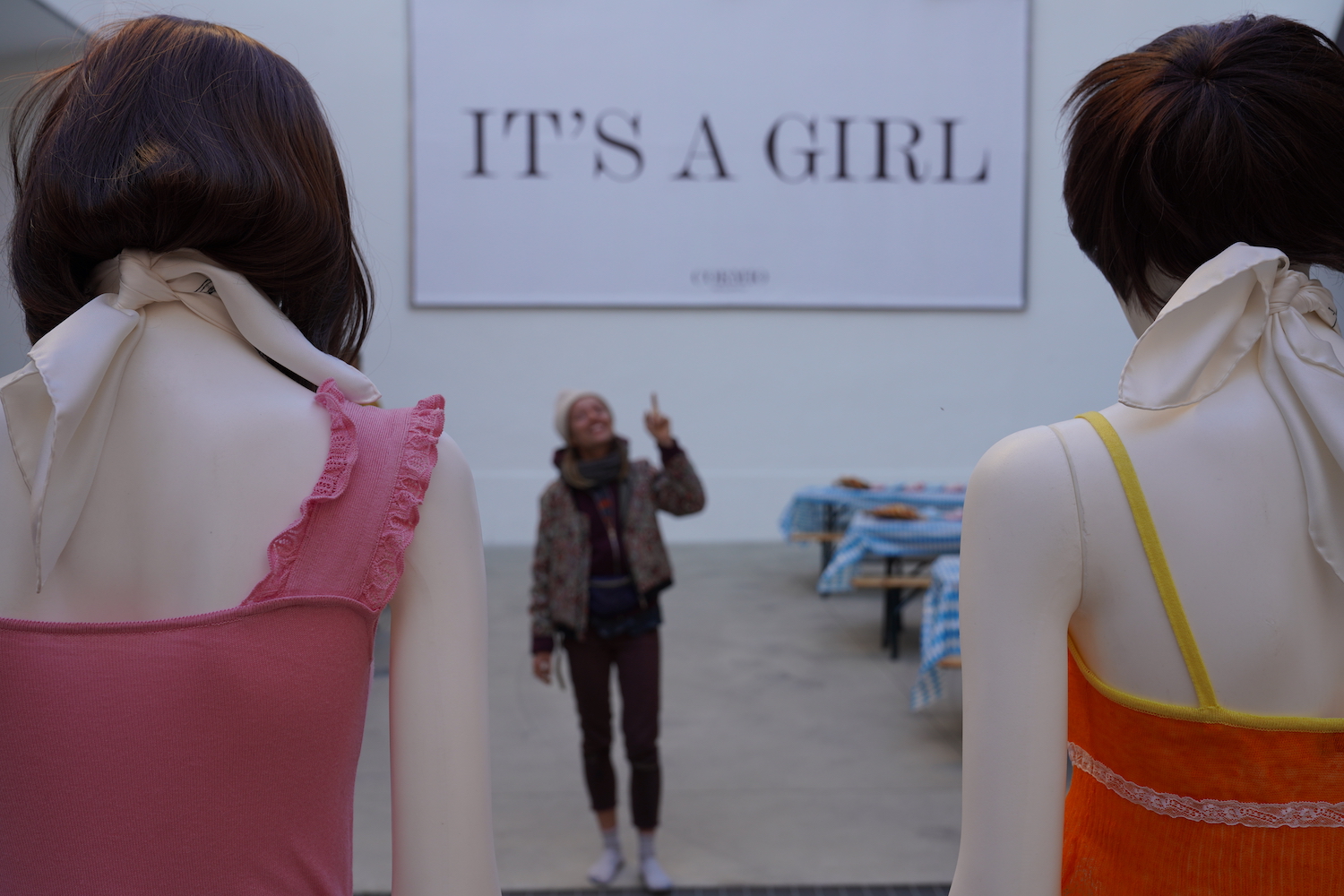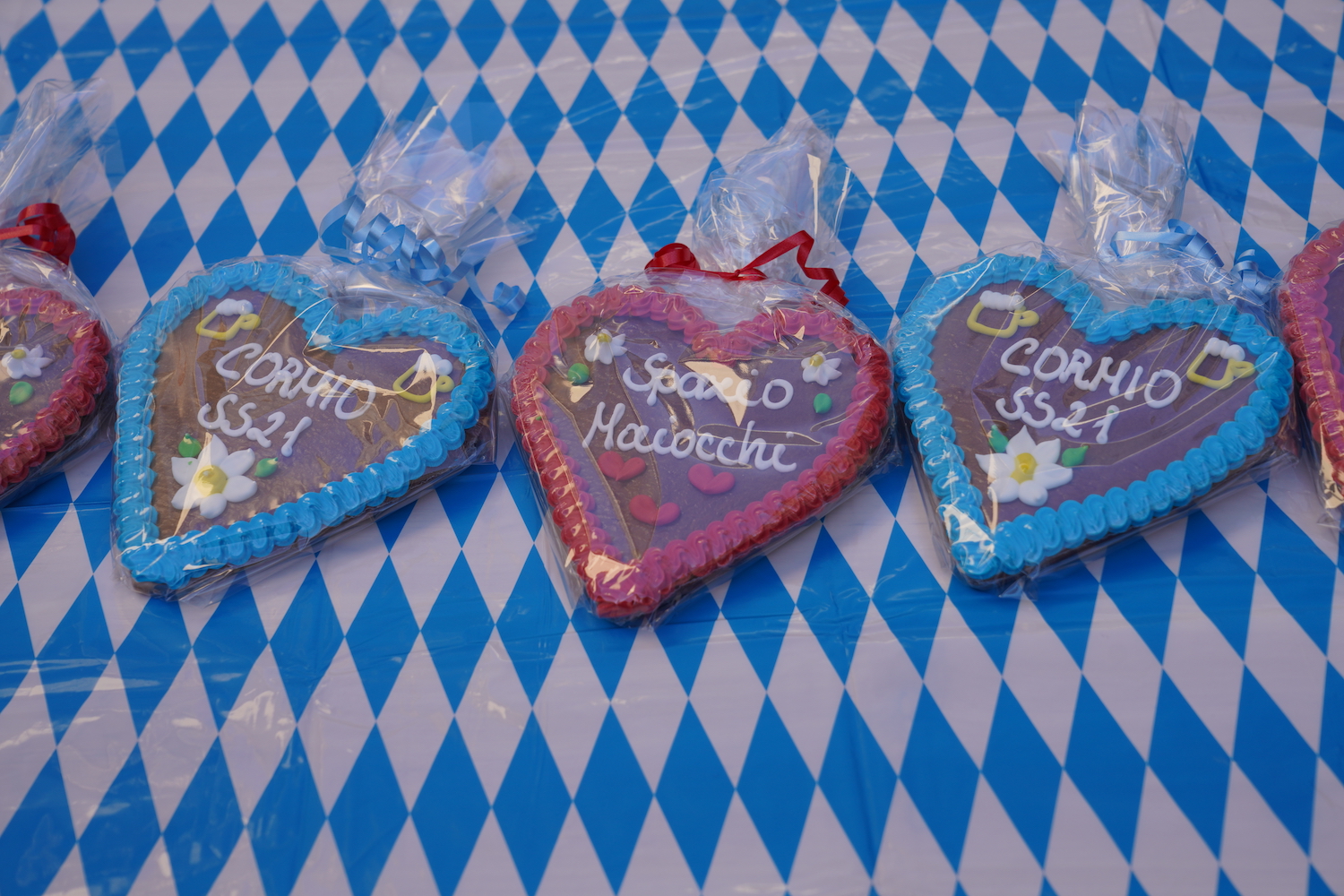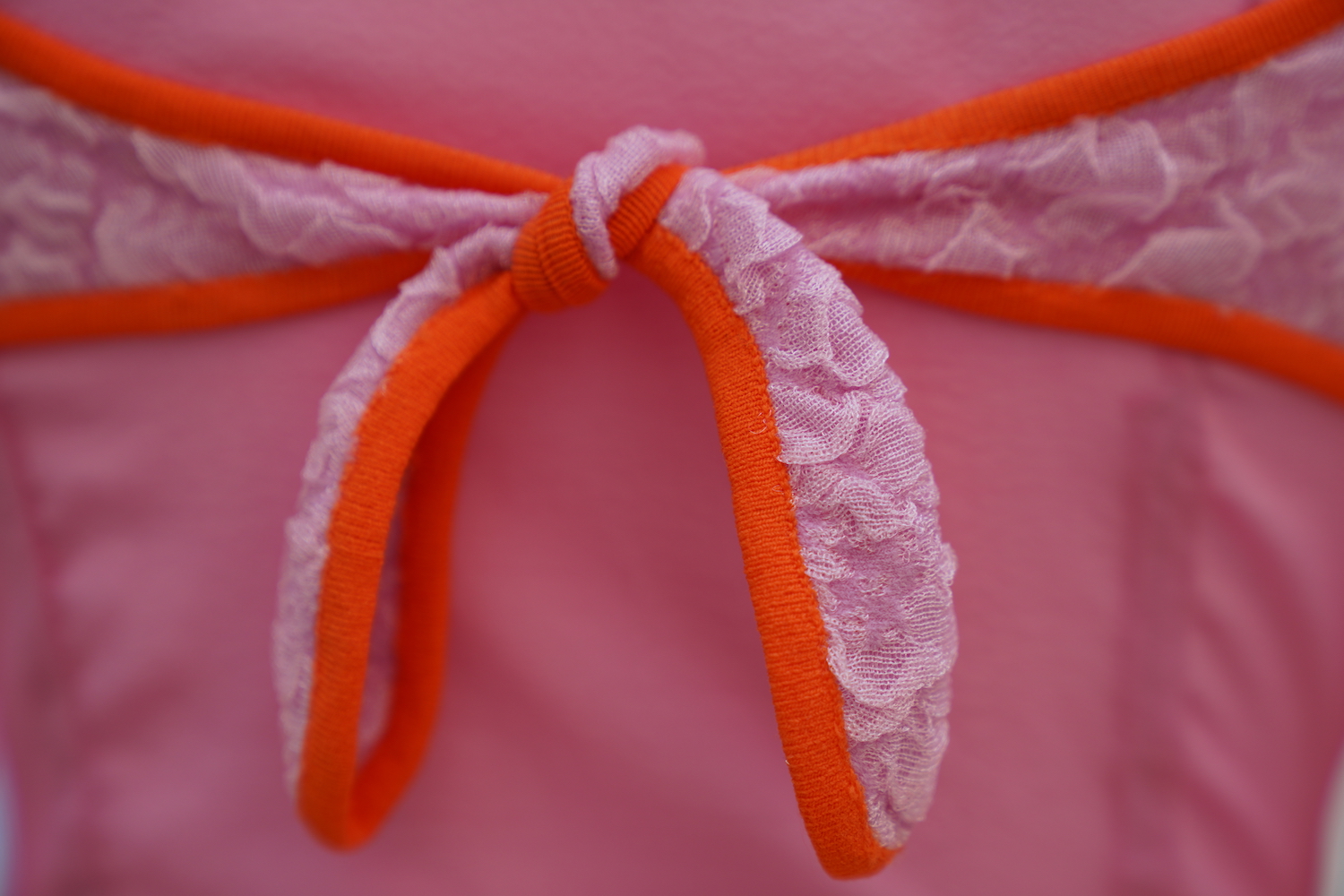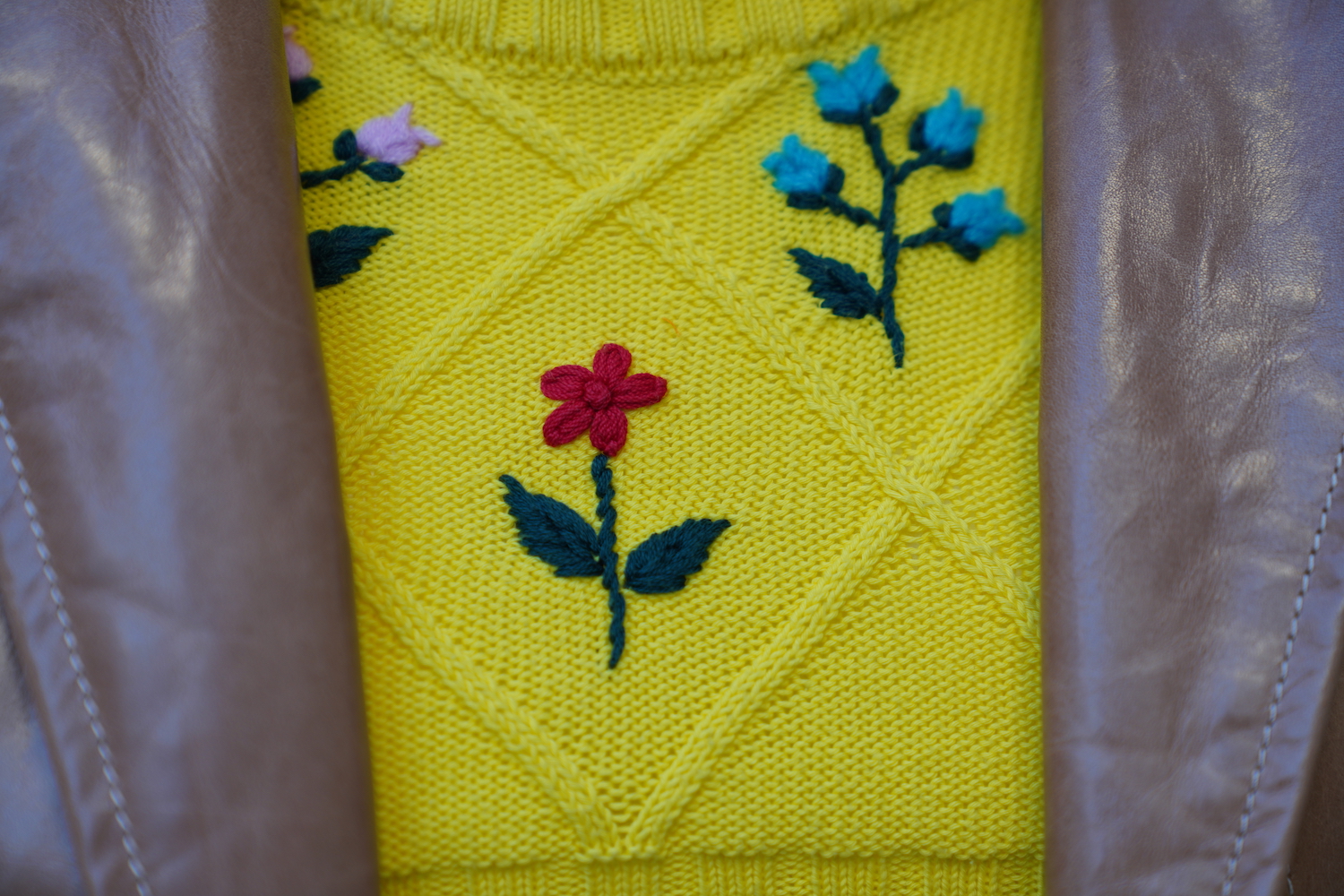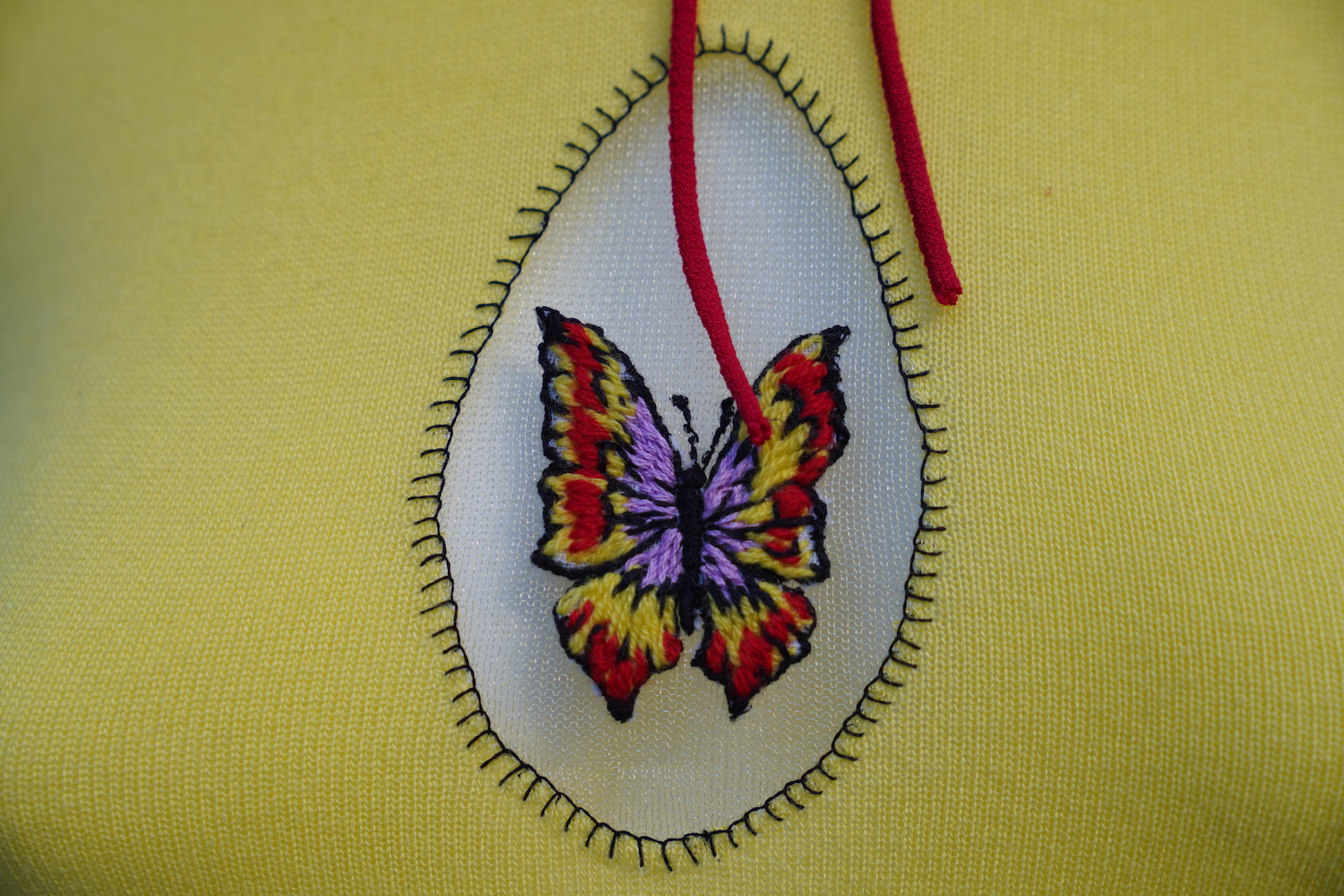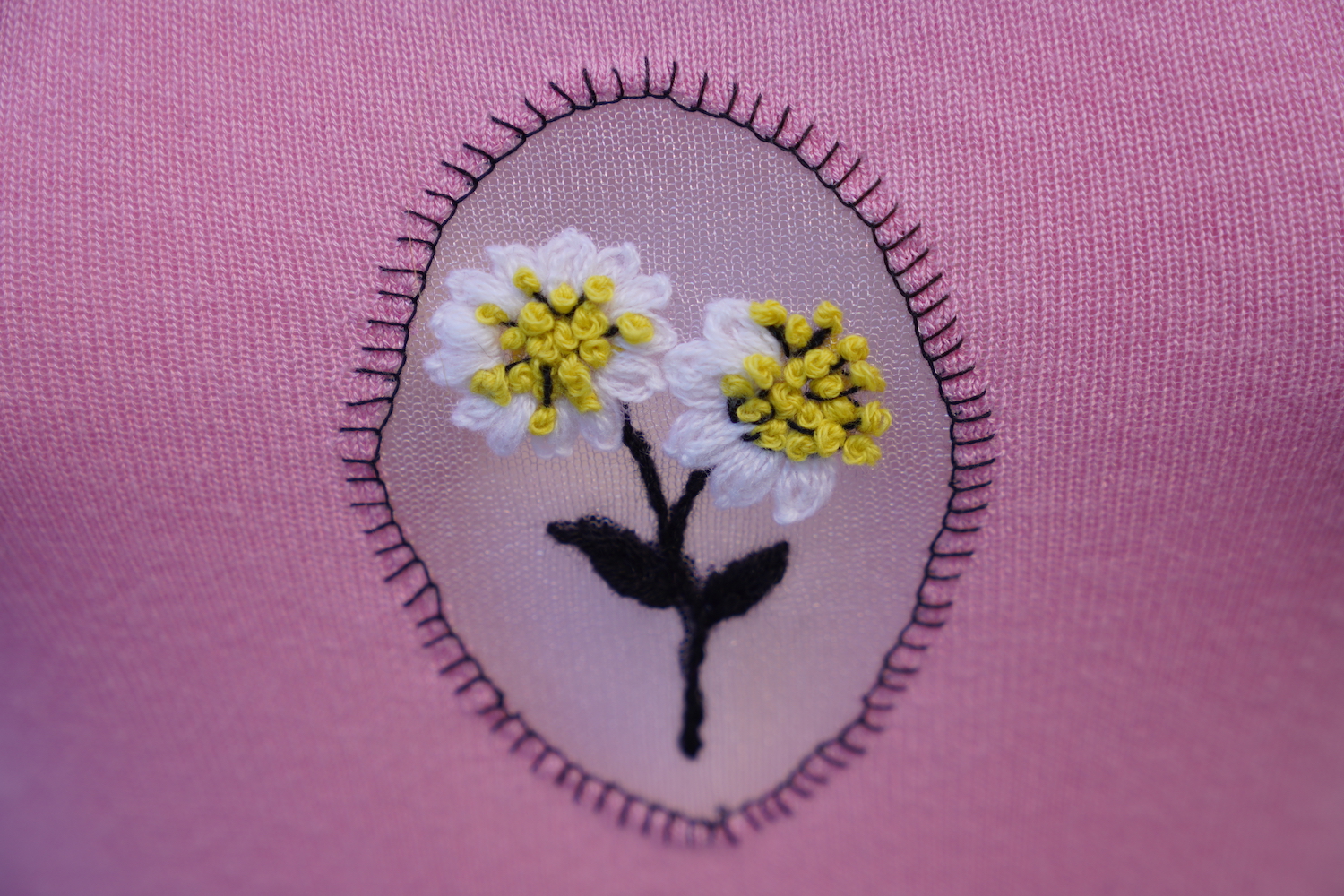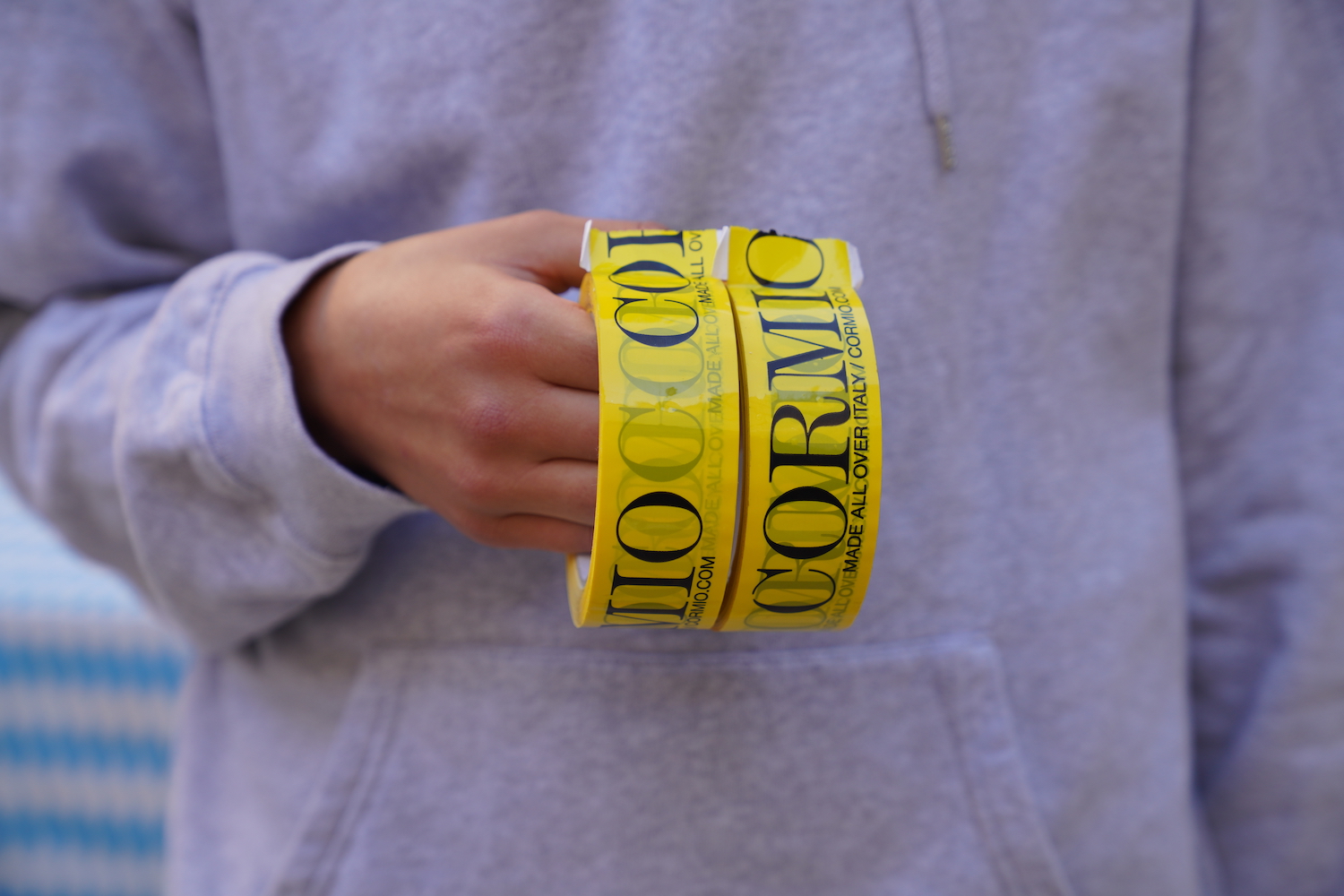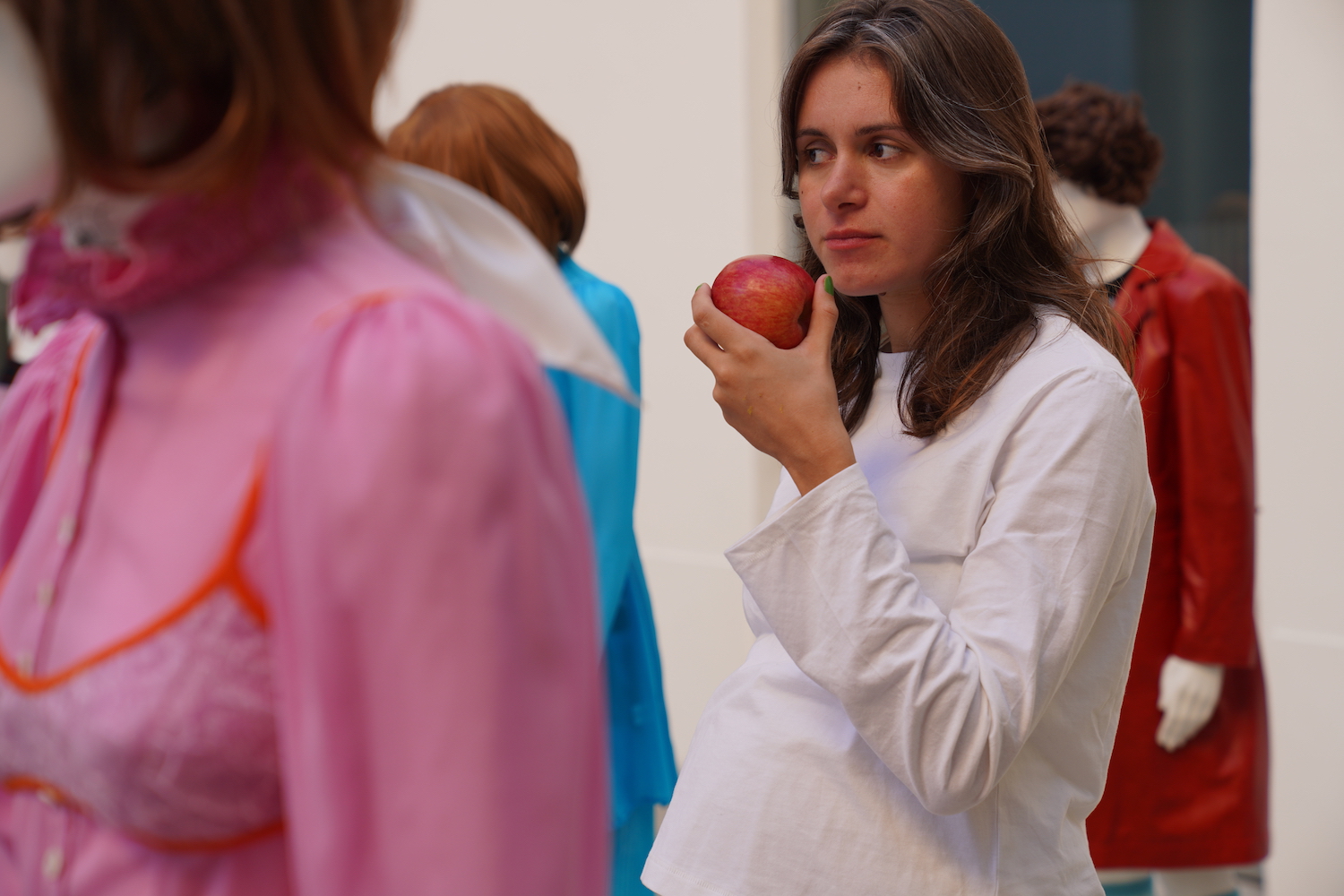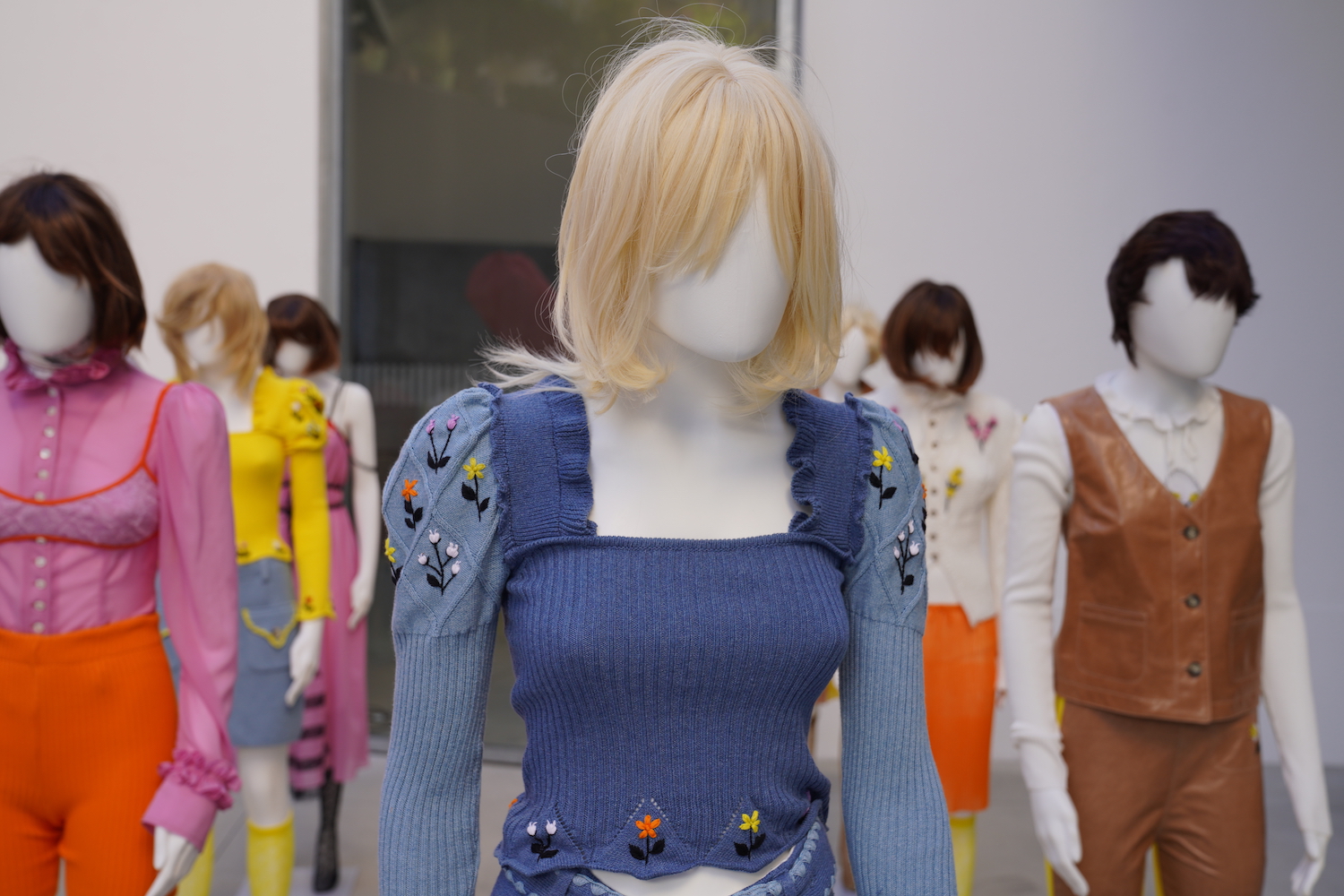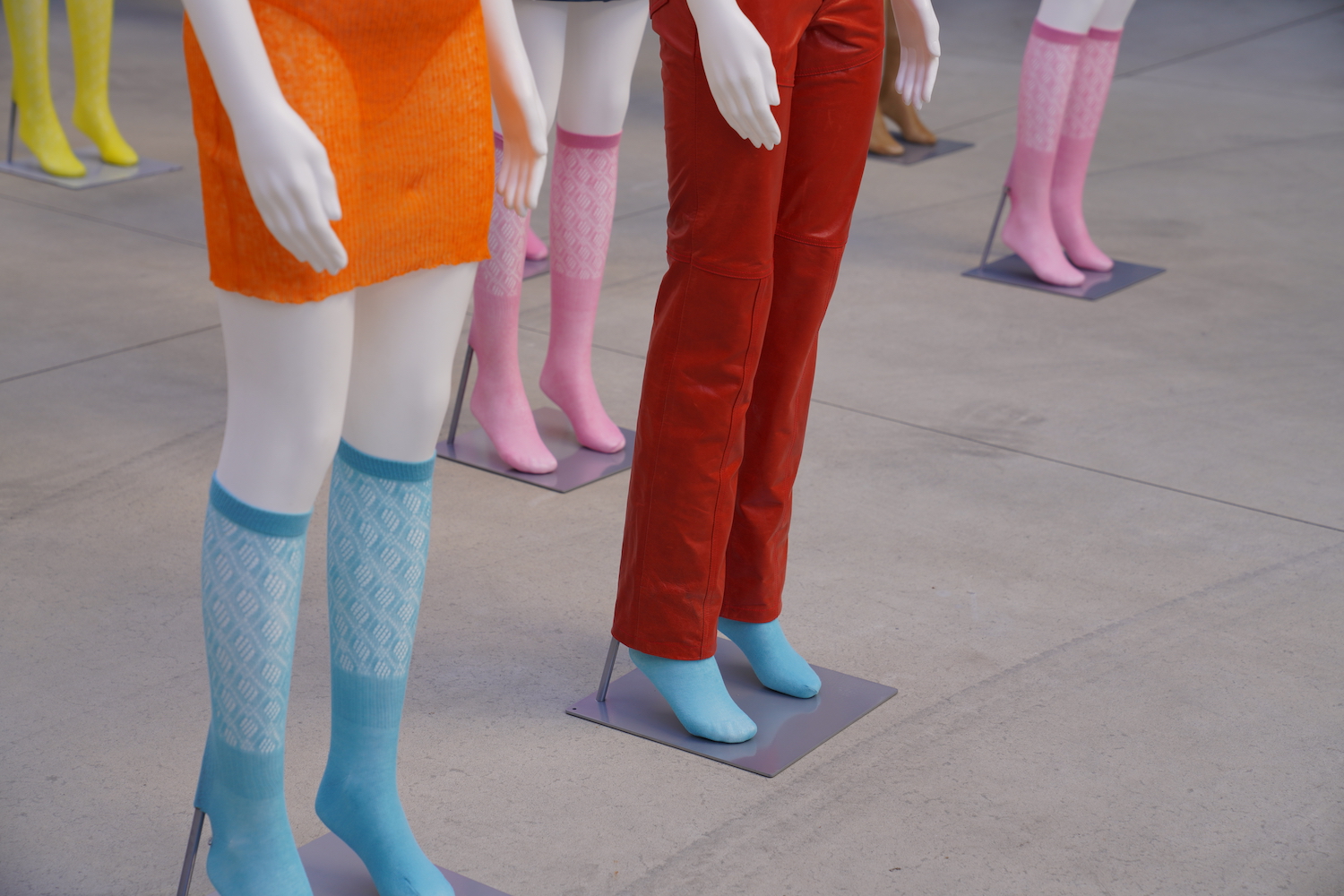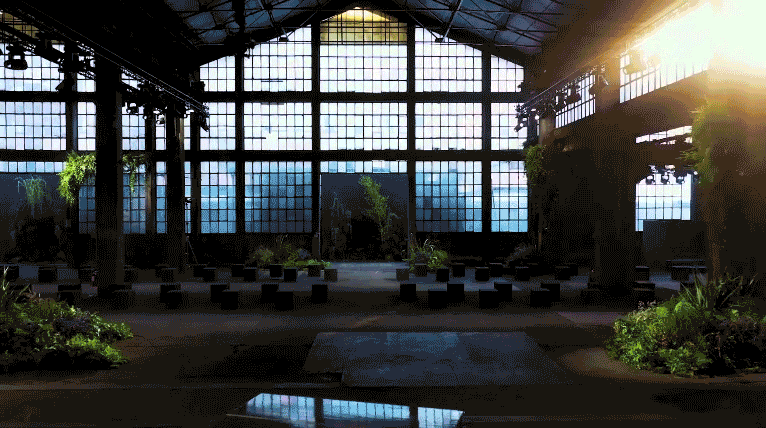Cormio was born in 2019. It is a fashion line that seems familiar yet dysfunctional at the same time. Their Instagram account appears to be run by a confused relative or cousin who loves fashion but also takes selfies in uncomfortable and not-very-glamorous situations. Gea Politi interviews Jezabelle Cormio, founder and designer of the brand, the mind behind a world that seems to belong to us even though it just began.
Gea Politi: When I came across your first fashion show (Fall/Winter 2020) I was surprised by your choice of location, hosting it in a village festival in Seveso. In fact, what struck me most was the way the show was filmed from different angles and perspectives, as if intending to make the video seem endless and the repetition and physical tiredness of the models a part of the work.
Jezabelle Cormio: The loop-like structure of the video is something that interests me a lot. The experience and sense of repetition almost feels like a nightmare. The way we shot the film was quite exhausting, since for each outfit we took several shots, and the models had to walk again at different angles. The truth behind the film is that for each take the models walked the same lap at least four times. The video was shot in one day, and as you can imagine, in a village festival there can be crowded moments and moments when people leave or are already drunk. Around 11:00 in the evening the children left, but there were groups of men that began to harass the models.
GP: So there we begin having the psycho-physical deterioration of both the models and the spectators…
JC: Yes, there is an aspect of degeneration that you may notice in the film, but not as much as you would in reality. In the video, I decided to strip away a defined sense of time; therefore the viewer will not have a feeling of beginning or end for the show. The film portrays some moments with many spectators and others that show a deserted location, which is then repopulated again. This carefree environment is unfortunately missing in fashion shows; it almost seems incoherent.
GP: Maybe the collection is also inconsistent and disturbing in a way?! However, when seen side by side, the clothing pieces are clearly linked together.
JC: Yes, the selection we made in the video seems especially inconsistent to give a strong idea of diversity.
GP: What made you decide to create Cormio?
JC: I worked on many projects as an independent designer, but for some reason they remained capsules, seasonal or detached from each other. Together with a partner, we decided to “bind” my work and focus on a real fashion line. The first season/collection is displayed in the video you recently watched, where the approach is probably more “chaotic” also because I shot several projects and mixed them together. For example, I never worked with knitwear in the past, and now it covers almost seventy percent of the production. I contacted leather suppliers; I developed different forms of prints. Each design is created by me. I was lucky to meet this man who owns a laboratory in Como. He is the first supplier who “complicates things for me” in a good way and pushes me further every time. Instead of focusing on one single color, we work with three simultaneously, and after various experiments we are able to decide which color works best for mini dresses in the show, which among other things had a translucent effect — almost a leather effect even though the prints are on wool. Thus the final outcome is laminated and creates a latex effect! This processing is a chance to give a unique meaning to each garment, because each piece is different from the other and you have no control over the result. There are rules that I follow, but it’s not easy to keep them!
GP: When you talk about your creations you almost seem to have a personal relationship with each of them. There is, on your part, a form of extreme protection.
JC: For me the most significant aspect is the emotional value that is created between the individual and the clothing piece. Therefore its use is no longer just a momentary need but creating a real memory. I would like that the people who wear my clothes remember the day they wore it and why. The favorite piece for me is a prerogative and I hate overproduction. Every season should have a very strong sense of existing. A garment should have a certain sentimental value or a precise idea behind its creation and, at the same time, it should be able to help the person imagine who they want to interpret when they leave the house. Playing on the different fantasies of oneself without dressing up, but moving just a little bit in the direction of one’s own perception, is interesting. In such a “journey” you can fantasize and feel like the Fight Club chick for a moment! These little obsessions are important!
GP: Cormio’s Instagram portrays women of different ages. Have you ever thought of doing a fashion show with “models” taken from the street, choosing them without specific physical criteria or according to gender?
JC: I believe that it would be a strong and difficult choice. In my opinion, I believe that the moment you decide to take on this approach you need to go ahead with a certain message.
GP: What is femininity according to Cormio?
JC: Knowing how to have fun freely. I see that guys also like to wear Cormio clothes a lot. I don’t know if this is femininity, but it could be a reading.
When I was at university I worked on a collection for plus-size models, followed by another one for men, and I got completely bogged down because it was 2013, before a Gucci by Alessandro Michele, when there was Hedi Slimane for Saint Laurent, who was one of the few designers to propose a more “romantic” line for men too. I wanted to work on decoration and make a collection with color and different decorative intersections, because even the man needs decoration as an expression of rebellion. At the time, black and white had become suffocating, as if that kind of minimalism elevated people above hedonism and above emotions. From there I understood that decoration and knowing how to have fun with flair was important to me. I thought that woman, femininity, must be able to want everything in fashion to get rid of definitions.
GP: When you design your collections, do you have many influences or is there a central theme in your research?
JC: At the moment the Tyrolese-Austrian world is definitely a strong influence. I realized that it has to do with an imagery of which cultural appropriation is not a problem. In the past I utilized Voodoo or Haitian fantasies as references. However, I later understood that these have a significant weight on narrative and culture, even if I highly admired them.
GP: Because the Tyrolese style has been reinterpreted many times, it would be difficult to accuse you of “reappropriation.”
JC: I am not interested in stealing from someone else. In fact, if you are looking for a Tyrolese sweater in Italy, you will always find the same type of design. I have never been to famous ski destinations in Italy, like Cortina for example, and despite that, I’ve noticed that many people from all over Italy have at least one Tyrolese element at home that they wear at least once in their lives. The presence of this very folkloric style is seen as something that elevates your status. First of all, it means that you have the privilege to go on ski holidays, and secondly you are able to appreciate a very specific taste. Aesthetically, it is not so fascinating, but its imagery is. Seeing a Tyrolese pot holder makes you think of a mountain chalet. It is the whole story behind this style that is engaging. A handkerchief for the kitchen is not interesting; it is the signaling part that adds something “other” to the person who works. This “Tyrolese” style in Milan is a sign of the surrounding bourgeoisie.
GP: Cormio is not present in terms of e-commerce. Is this a choice?
JC: I do not enjoy wasting fabrics, nor the work of others. In fact, I have not produced much in the first collection also for this reason. For example, the leather pieces are produced on demand, as we work with different supply chains in Italy. Moreover, leather is also a complex fabric to treat. Now that we have a more concrete idea of the public’s demand, we will go up with the number of pieces, and already from this series we will be more present online.
GP: Is there someone that guides and inspires you creatively?
JC: I am very much guided by the sense of complicity between me and my suppliers. Cormio is a small brand, which is why I am still completely vulnerable, so I have to be very careful who I choose to be part of the brand. My suppliers are all women, and there is a great collaboration, a very strong complicity. They are part of the Cormio family.

